Jeju Island: Where nature, myth, and resilience meet
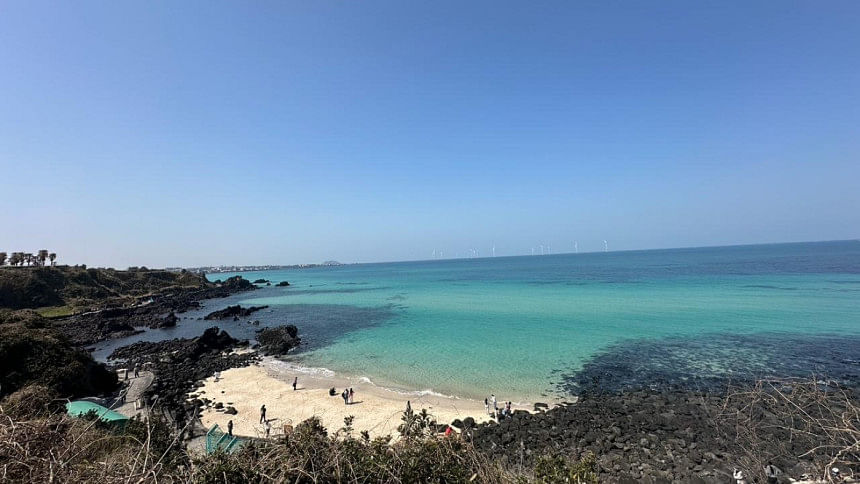
Earlier this April, I had the incredible opportunity to attend the World Journalism Conference in Seoul, joining journalists from across the globe to explore new ideas and share stories.
After the conference, we travelled to South Korea's famous Jeju Island — a place that immediately captivated my heart and imagination. Known locally as "Samdado," or the "Island of Three Manys", Jeju is celebrated for its abundance of three natural and cultural elements: the rocks that shape its landscape, the strong women who define its spirit, and the ever-present winds that sweep across its shores.
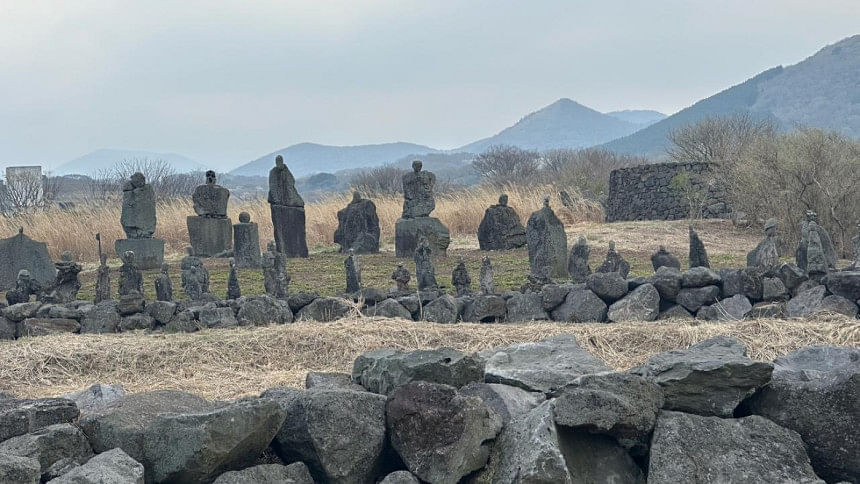
Jeju's dramatic volcanic origins are visible everywhere. Millions of years ago, eruptions formed the island's unique terrain — dark basalt stones, craters, and towering cliffs.
One of the most fascinating places we visited to witness this legacy was the Jeju Stone Park. Spanning a vast area, it is home to the famous Dol Hareubang, or "stone grandfathers," statues carved from volcanic rock. These figures, with their serene, wise expressions, have long been believed to protect Jeju's people and land.
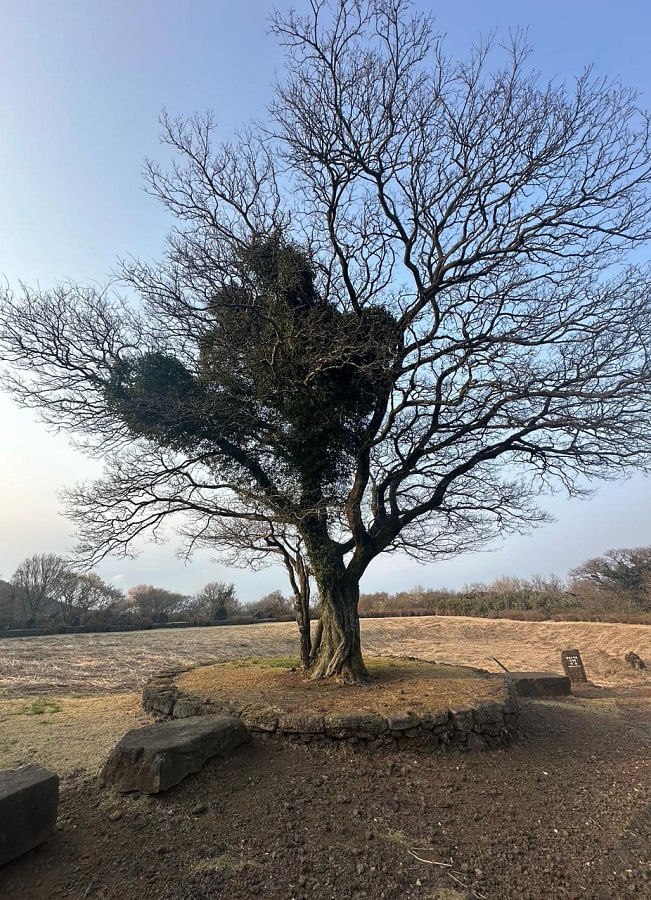
Walking among these silent guardians, I was struck by the deep sense of stillness and history they carry. The stones aren't just relics—they tell stories of resilience, spirituality, and an unbreakable connection to the earth.
The park also features tranquil walking trails and a carefully reconstructed traditional village, built from reclaimed materials of old Jeju homes with their iconic thatched roofs. This village is more than a museum — it's a living reminder of the island's past and was even a filming location for acclaimed productions like the award-winning film Jiseul and the Netflix series When Life Gives You Tangerines. In fact, the show's connection to Jeju was clear, as many scenes were shot not only at the Stone Park but also at other breathtaking island spots like the Gimnyeong Coast, Hado Fishing Village, and Seongsan Ilchulbong peak.
One of the most serene experiences on the island was walking the Handam Coastal Trail, a gentle 1.2-kilometre path stretching from Gwakji Beach to Handam Beach. This trail is thoughtfully paved and wheelchair-accessible, making it welcoming for visitors of all ages and abilities.
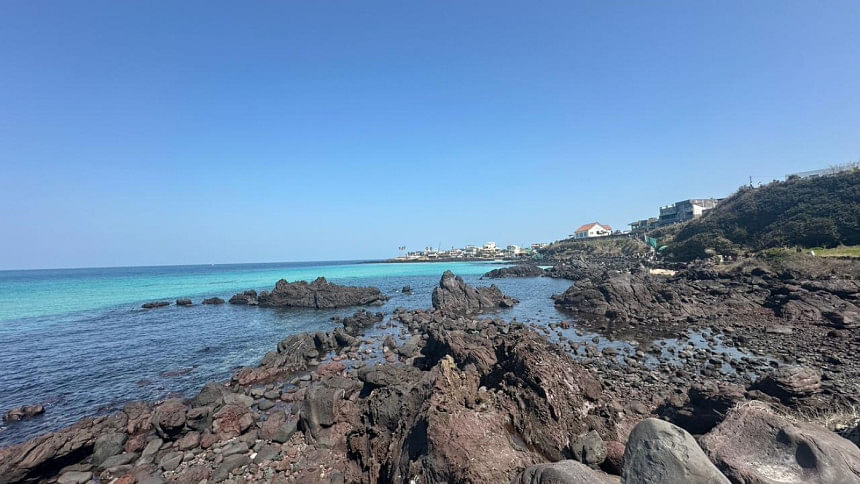
As I walked, the ocean stretched endlessly beside me, waves crashing softly against jagged black volcanic rocks. The sea breeze mixed with the subtle fragrance of wildflowers, creating a soothing atmosphere that made it easy to forget the chaos of daily life.
Many fellow travellers paused to sip coffee from nearby cafés or simply sit quietly, soaking in the peaceful solitude. The intimacy and calm of this trail are what set it apart from other more crowded coastal walks I have visited around the world.
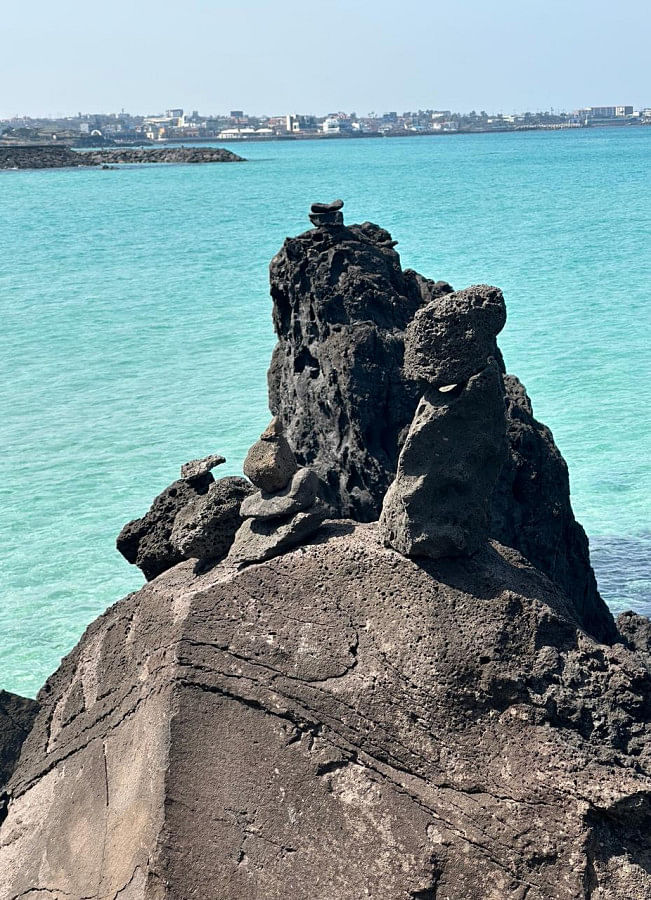
Jeju's cultural richness, however, goes far beyond its stunning landscapes. One of the island's most remarkable legacies is the story of the Haenyeo, the legendary female free-divers who have, for centuries, harvested the sea without modern diving equipment.
Although I didn't meet them personally, learning about their history and way of life left a lasting impression on me. These women, many in their sixties and beyond, dive for hours in cold waters, gathering seaweed, abalone, clams, and other marine life that sustain Jeju's economy and traditions.
The Haenyeo live in a matriarchal society that deeply respects nature's limits and practices sustainable harvesting. Their signature sumbisori — a sharp whistle they release upon surfacing — is both a practical signal to fellow divers and a haunting melody that lingers in the mind. UNESCO has recognised their unique culture as an Intangible Cultural Heritage, highlighting their importance not only to Jeju but to the world.
The Netflix series When Life Gives You Tangerines beautifully portrays their lives, struggles, and contributions, bringing global awareness to these resilient women who embody strength, wisdom, and harmony with the ocean.
Jeju Island is not just a travel destination; it's a place where nature, culture, and history meet in ways that invite reflection and connection. For those of us from Asia, where tradition and modernity often coexist in complex ways, Jeju offers a chance to witness a community that honours its past while embracing the present. Walking among ancient stones, breathing the salty ocean air along the Handam Trail, and hearing stories of the Haenyeo's quiet bravery — these experiences stay with you long after you leave.
Whether you seek adventure, serenity, or cultural insight, Jeju Island calls out as a destination rich in meaning and beauty. It is a reminder that strength often lies in resilience, that stories can be told through stone and sea, and that sometimes, slowing down is the most powerful way to move forward.
The writer is a musician and journalist. Her X (formerly Twitter) handle is @elitakarim.

 For all latest news, follow The Daily Star's Google News channel.
For all latest news, follow The Daily Star's Google News channel. 


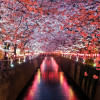
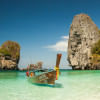




Comments